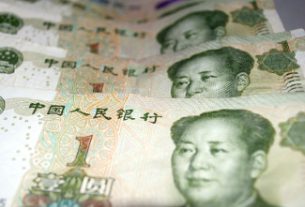You would think that with a national debt over $21 trillion and continuing to climb every day that the federal government would get serious about cutting back on spending sometime, but oh no. More and more we hear from Washington that the government isn’t spending enough. We need to spend more to to defend against the threat from North Korea, to support farmers and manufacturers, or to build yet more infrastructure rather than repair what already exists. That’s why the budget deficit continues to climb and may very well return to trillion-dollar levels for the foreseeable future. And that’s not good for taxpayers, investors, or anyone else who values a strong, healthy, and vibrant economy.
In fact, the government’s fiscal situation has become so bad that it is even introducing a new Treasury security, the 2-month T-Bill, which joins the 1-month, 3-month, and 6-month T-Bill issues. It’s pretty bad when the government has to resort to issuing new maturities of debt when it’s already $21 trillion in debt, but as long as there’s demand for that debt, the government can continue to spend like a drunken sailor. The question is, however, what will happen when demand for that debt dries up?
Aside from an outright default, the likelihood that the demand for US government debt will dry up overnight is minimal. But the demand for US debt at current prices (i.e. interest rates) may very well. That will force the government to offer higher interest payments to entice investors to keep loaning it money. And who will pay for those higher interest payments? The taxpayers, of course.
Every dollar spent today is a dollar that has to be paid back in the future. The reason the US government has been able to run up a $21 trillion debt is because there are so many investors willing to purchase that debt that the government can keep rolling it over. And taxpayers keep paying those rising interest costs. Politicians assume that they can keep rolling that debt over forever, that there will never be an end to it, and so they feel no pressure to change the status quo.
But the day will come when things will change, and it will likely come suddenly and unexpectedly, probably when taxpayers will have been squeezed too far to pay for rising interest costs. Demand for government debt will drop, interest rates will spike, and both the government and investors will wish they had acted differently. They’ll finally realize that the current debt funding model is unsustainable and that the government can’t spend other people’s money forever.
Investors who purchased Treasury debt thinking it was a safe asset will realize that it really isn’t. It may be AAA-rated (by some agencies), but the risk of default is increasing all the time and no one can predict when it will occur. When interest rates spike, those holding Treasury debt will see the value of their holdings plummet.
Those investors will wish they had invested in gold, a true safe asset, but by then it will be too late. Gold is the ultimate hedge against inflation, government default, and financial crisis. That’s why so many investors trust it to safeguard their hard-earned wealth. They know that when government debt fades away into nothing, their gold will still be there assuring them of a bright and prosperous future.
This article was originally posted on Goldco.




